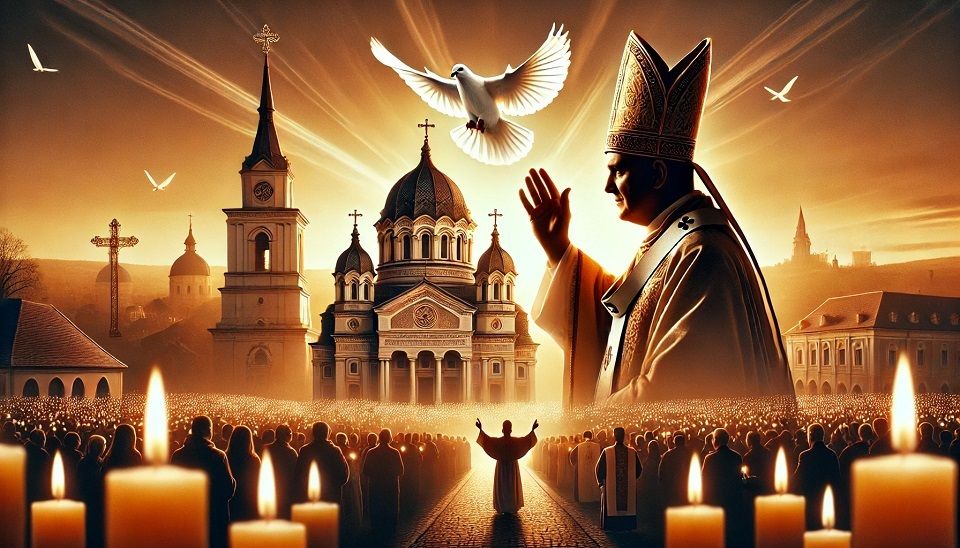Time and modernisation in the Romanian principalities
Time has always been regarded by people as something that repeats itself, from the succession of days, nights and seasons, to that of ideas and patterns.

Steliu Lambru, 22.05.2021, 13:55
Time has always been regarded by people as something that repeats itself, from the succession of days, nights and seasons, to that of ideas and patterns. The belief that time repeats itself is so strong that some have imagined history as having the same quality. The time measurement, however, made people understand that they are cyclical, indeed, but that they do not return. It is the same with history. It may seem that one period is similar to another, but in fact it is not so. Although similar, peoples lives are different, in different historical periods and are shaped by ideas.
The increasingly rigorous measurement of time has never stopped and it continues today. Archaeologists have shown that before the clock was invented, people measured time by guiding themselves to the position of the sun and the moon. Sundials, in the Stone Age, helped people organise their activities. Solar obelisks, water clocks, and ancient hourglasses had the same function. The mechanical clock was the object that revolutionized time measurement and perception, rationalized and divided it into subdivisions. Todays electronic and atomic clocks continue a tradition of thousands of years of measuring time.
Churches were the center of the medieval community in the West, and their high towers had intricate clockwork mechanisms that measured time. There was a time for the divine service, a time for work, a time for sleep and a time for relaxation and socialization. In Middle Ages, clockmakers took the manufacturing of clock towers to another level. In the Orthodox and later the Ottoman space, the places of worship did not have clocks, with the bells assuming that function. Time measurement was one of the Western models that entered the Romanian world at the beginning of the 19th century. Given that everything that would shape the Romanian society starting with the year 1800 came from the West, time measurement could not have come from elsewhere. Thus, the “Turkish” time as it was called, was replaced by the “European” time.
The adoption of the Western model of time measurement was a sign of emancipation, of the connection to the new and of taking distance from all that had been oriental and Phanariot. Historian Dorin Stănescu studied the entry of the Western time measurement model into the Romanian world of the 19th century. It also meant the emergence of the concept of public clock, the object that made it easy for anyone to organize activities.
Dorin Stanescu: “Public clocks entered late in the Romanian space. It was not until the 18th century that boyars began to buy clocks, and many well off people imitated them. The private clock, the public clock and the clock shop became part of the urban landscape and of everyday life. The Phanariot century in the Romanian principalities also meant borrowing the “Turkish” time model, brought here from the Ottoman Empire by the Greeks. Thus, time was calculated in keeping with the five daily prayers, the sunrise and the sunset. The European or German time measurement model will later replace the Turkish model. “
The adoption of the new model of time measurement was a gradual transition, taking into account a period of coexistence of the two models. Romanians started referring more frequently to the “European time” and change became inevitable as generations changed. As always, the model was adopted easier by the younger generations who presented it as a brand of their own identity, in order to distance themselves from the generations of their parents and grandparents.
Dorin Stănescu explains how people, although they adopted the new model, still referred to the “Turkish time” when they felt the need to report a special event, such as the earthquake of 1802: “The reports from the beginning of the 19th century are very interesting. They show us that people were connected to both the “Turkish” time and the “European” time. Historian Ilie Corfus has a book, entitled Notes from a long time ago, in which he mentions a series of notes from religious books in which people living in different periods wrote down their thoughts. I quote an example from 1802, of an occasional chronicler who wrote the following on the cover of a book: October 14, 1802, at 7 hours Turkish time and 12 hours German time, the earth shook on the day when I was at the fair in Targu Jiu. This need for accuracy is fascinating, as well as the way the chronicler refers to all known models of reporting time.
After 1848, all that meant the spirit and mentalities of the Phanariot century was given up and the a la turca model was no longer used. “Everything changed with the adoption of the model of European time reporting. People planned their work better and the 8-hour working day concept spread. The emergence of railways and trains contributed to the accuracy of time measurement.





























